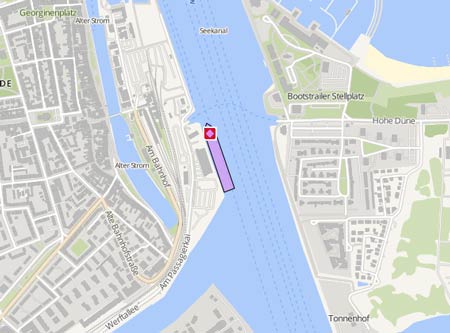CMA CGM JULES VERNE
Kurs/Position
Die letzten Häfen
Die letzten Wegpunkte
Die neuesten Nachrichten
Container ship safely transited Red Sea afer EUNAVFOR ASPIDEs started
The French shipping company CMA CGM said on Feb 20, 2024, that the 'CMA CGM Jules Verne', en route from Jeddah to Port Keelung, has transited the Red Sea, escorted by the French frigate 'Alsace', after the company suspended transits through the region earlier in February due to the maritime security situation. The French Navy on Feb 20 shot down two drones launched from Yemen towards the Red Sea. The French Navy has two frigates deployed in the Southern Red Sea and Gulf of Aden. The European Union on Feb 19 announced the launch of a naval operation, known as EUNAVFOR ASPIDES, to protect freedom of navigation in the Red Sea against Houthi threats. The Operation ASPIDES will closely coordinate with EUNAVFOR ATALANTA, the EU’s ongoing counter-piracy operation off the Horn of Africa and western Indian Ocean, in order to contribute to maritime security, from the Suez Canal to the Strait of Hormuz.
CMA CGM Launch First Wooden Containership
Third-largest shipping line CMA CGM and French wooden toys manufacturer VILAC have created a co-branding partnership and have together launched a wooden ‘My First Containership’ toy for children over the age of 3. This beautiful item was created according to large CMA CGM container ships. It was designed by CMA CGM, produced and sold by VILAC. This wooden toy will be widely distributed in more than 12 countries including France, the USA, Italy, the UK and Indonesia. It is available to order worldwide through VILAC distributors’ shops and on their websites. My first container ship is an educational toy to teach children how to stack shapes, and the first container transportation themed wooden toy. It was designed according to CMA CGM large container ships and was produced by VILAC – the French leading wooden toys manufacturer since 1911. This co-branding partnership between VILAC and CMA CGM is a new step in its brand notoriety reinforcement. Fact File: CMA CGM, founded and led by Jacques R. Saadé is a leading worldwide shipping group. Its 470 vessels call more than 400 ports in the world, on all 5 continents. In 2014, they carried 12.2 million TEUs (twenty-foot equivalent units). CMA CGM has grown continuously, and has been constantly innovating to offer its clients new sea, land and logistics solutions. With a presence in 160 countries, through its 655 agencies network, the Group employs 22,000 people worldwide, including 2,400 in its headquarter in Marseilles. https://www.porttechnology.org/news/cma_cgm_launch_first_wooden_containership
CMA CGM Jules Verne involved in test of towing capability off Heligoland
The CMA CGM Group and the German Central Command of Maritime Emergencies have conducted an exercise to test the capability to tow ultra-large container vessels. The test was held on June 13 2015, at the Deep Water Road off Heligoland, and the "CMA CGM Jules Verne" was used for the exercise. The test involved different exercises for "CMA CGM Jules Verne" – altering geographical position, taking over a ship in distress role during emergency towing and allowing representatives of the Central Command of Maritime Emergencies to board. The operation forces had to board the container ship via helicopter and evaluate the situation with the ship's master. The exercise also aimed to train the communication between the on-scene-coordinator, the boarding team, the emergency towing vessels and the "CMA CMG Jules Verne". The teams of the Central Command of Maritime Emergencies were tested to assemble towing connections and tow the the ultra-large container vessel on different courses. Photos: http://www.havariekommando.de/presse/gallery.php.html?file=bildergalerie/2015_06_13/index.html&oid=9036&tsize=1 CMA CGM Jules Verne (IMO number 9454450 and MMSI 228032900) was built in 2013. The 186,470-DWT vessel has a lenght of 396 m.
News schreiben

